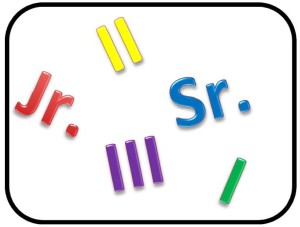
Copyright: ivelinradkov / 123RF Stock Photo
As I’m getting back into the blogging swing, we’ll catch up with some random information this week.
Professional and Personal Titles. When using a professional title, do not use a personal title. For instance, Mr. John Jones, Esq. is incorrect. So is Dr. Julie Smith, M.D. Choose one or the other.
Plurals of Personal Titles. When addressing more than one person, you can pluralize the titles.
- The plural of Mr. is Messrs.
- The plural of Ms. is Mses. or Mss.
- The plural of Mrs. or Mme. is Mmes.
- The plural of Miss is Misses
Pages and lines. When you are referring to pages and/or lines in another document, you use “p.” for one page or “pp.” for multiple pages and “l.” for one line and “ll.” for multiple lines. Always pay attention to the range of your citation. If you are citing to a deposition excerpt at pages and lines 13:15-15:20, it would be pp. 13:15-15:20. Sometimes the writer will start with one page and just use “p.” everywhere, but if the citation is to multiple pages, you should change it.
Periods With Contractions. Do not use a period after a contraction. For instance, in my recent travels, I saw a sign for a national park that said “Nat’l. Park.” That is incorrect. “Nat’l” is a contraction for “National,” not an abbreviation, so it should not have a period at the end.
Signing Letters and Emails. When a non-attorney is using a signature block in a letter or an email, they should always include their title, i.e., Legal Assistant, Paralegal, etc., so the recipient knows that the communication is not from an attorney.
That is enough randomness for now. If you have random questions, leave a comment below and watch for the response in an upcoming post.


 Follow
Follow


 In a continuation of last week’s article
In a continuation of last week’s article  In legal documents, it seems that italic type is used more frequently than underlining—likely because The Bluebook: A Uniform System of Citations has changed the treatment of cases cited from underlining to italics as long as it meets court rule requirements. Well, that, and the fact that computers made the use of italics much easier. I think italics looks better than underlining, but that is personal preference. Here are some rules for italics and underlining.
In legal documents, it seems that italic type is used more frequently than underlining—likely because The Bluebook: A Uniform System of Citations has changed the treatment of cases cited from underlining to italics as long as it meets court rule requirements. Well, that, and the fact that computers made the use of italics much easier. I think italics looks better than underlining, but that is personal preference. Here are some rules for italics and underlining.


 When a father and son have the exact same name (first, middle, and last) the son would use Jr. and the father would use Sr. If a son/grandson continues with the same exact name, the grandson would use III and father and grandfather could continue using Jr. and Sr. or could change to II and I, respectively. The Roman numeral designation II can also be used where a child is named after another relative like an uncle or grandfather. Royalty would always use the Roman numeral designations. The issue comes with whether or not to use a comma. According to the Gregg Reference Manual, the trend is not to use a comma to set off those elements, but the person’s preference should always be respected. If you know that the person prefers the comma in their name, follow these rules:
When a father and son have the exact same name (first, middle, and last) the son would use Jr. and the father would use Sr. If a son/grandson continues with the same exact name, the grandson would use III and father and grandfather could continue using Jr. and Sr. or could change to II and I, respectively. The Roman numeral designation II can also be used where a child is named after another relative like an uncle or grandfather. Royalty would always use the Roman numeral designations. The issue comes with whether or not to use a comma. According to the Gregg Reference Manual, the trend is not to use a comma to set off those elements, but the person’s preference should always be respected. If you know that the person prefers the comma in their name, follow these rules: